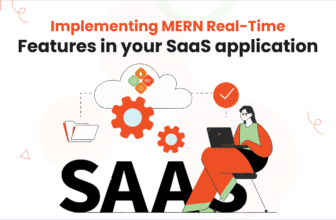The workplace culture and hiring practices paradigm has witnessed a remarkable shift in recent years, with diversity and inclusion taking center stage. Companies operating in various industries now recognize the multiple benefits of diverse teams to fuel innovation, unlocking creativity, and fostering an environment of inclusivity and equity. In this dynamic landscape, Applicant Tracking Systems (ATS) have emerged as powerful catalysts, pushing organizations toward a future where diversity and inclusion are deeply ingrained in the hiring process.
The Role of Applicant Tracking System in hiring
ATS has come a long way from its humble origins. It’s no longer just a glorified digital filing cabinet but a sophisticated tool that streamlines the hiring process for companies and job seekers alike. Think of it as the matchmaker of the recruitment world, connecting the right talent with the right opportunities.
Why is Inclusivity and Diversity important in recruitment?
Picture this: a workplace where different voices, backgrounds, and perspectives come together like a harmonious orchestra. That’s the magic of diversity and inclusion – it’s a recipe for innovation, creativity, and success.
Applicant Tracking Systems are instrumental in influencing the modern hiring scene, providing benefits that champion diversity, equity, and inclusion. By utilizing ATS features like anonymized screening and data-driven decision-making, companies can form more diverse and inclusive teams that put in motion innovation and achievement.
How can an organization use ATS for diverse candidate sourcing?
One of the key advantages of using ATS is its ability to eliminate unconscious bias in the initial screening process. Traditional recruitment methods often rely on manual resume screening, which can unintentionally introduce bias based on factors such as gender, ethnicity, or educational background. However, ATS software uses algorithms to analyze resumes based on predetermined criteria, ensuring that candidates are evaluated solely on their qualifications and experience. This helps organizations to identify and consider a more diverse pool of candidates, increasing the chances of finding the best fit for the job.
Utilizing ATS for Broad Job Postings
Say goodbye to the traditional method of posting job ads on a boring bulletin board.
Thanks to the power of ATS, any business can now spread its job opportunities far and wide, reaching a diverse pool of candidates. No longer confined by limitations or boundaries, ATS enables you to cast a wide net and attract individuals from all walks of life. This revolutionary tool promotes unbiased hiring practices and fosters an inclusive culture within the organization. Additionally, by crafting job descriptions that speak to a diverse audience and setting inclusive criteria, you’re laying the groundwork for a more welcoming and equitable hiring process.
Preventing Bias in Resume Screening Algorithms
Algorithms are great at crunching numbers, but they’re not immune to bias.
By fine-tuning your resume screening process and keeping a keen eye on potential biases, you can ensure that every candidate gets a fair shot at the spotlight. Many ATS offer features such as anonymized resume screening, where personal identifying information like name, gender, and ethnicity are removed from applications before they reach recruiters or hiring managers. This helps to ensure that candidates are evaluated solely based on their qualifications and experience, rather than on irrelevant factors.
Measuring and Improving Diversity Metrics with ATS
ATS generate valuable data and analytics throughout the hiring process, enabling recruiters and hiring managers to track key metrics related to diversity and inclusion. Tracking this diversity data in ATS reporting allows companies to understand the current state of their recruitment efforts. Setting and monitoring diversity goals in recruitment helps to keep the focus on creating a diverse and inclusive workforce. With the right tools in place, companies can measure progress and make improvements where needed.
Training and Development for ATS Users on Diversity and Inclusion
It’s essential to provide training on diversity and inclusion for ATS administrators to ensure that the system is utilized effectively to support diverse recruitment practices. Promoting cultural awareness among ATS users can help create a more inclusive environment where everyone feels valued and respected.
But is ATS completely bias-free?
ATS can bring great advantages in fostering diversity and inclusion, but it’s crucial to be aware of the challenges they pose. Organizations must consistently assess and improve their ATS algorithms and criteria to prevent unintentional biases. Moreover, promoting diversity and inclusion requires more than just relying on technology – it requires comprehensive cultural and organizational shifts to create an environment that embraces and celebrates diversity.
The key takeaway
Think of Applicant Tracking Systems as tools that businesses use to manage hiring new employees. These tools help by organizing job applications, scheduling interviews, and keeping track of candidate information. But beyond just making the hiring process easier, ATS also plays a big role in ensuring everyone applying for a job has a fair chance. By using ATS, a business can make sure they’re not accidentally favoring one group of people over another. Instead, they’re giving everyone an equal opportunity to show why they’d be great for the job. This is really important because it means that an organization can build teams that are made up of people from all different backgrounds and walks of life.
When you have a diverse team, you get a mix of perspectives and ideas that can lead to better solutions and more creativity. Plus, it helps create a workplace where everyone feels valued and included, no matter who they are or where they come from.
So, ATS isn’t just about making hiring easier; they’re also about ensuring everyone has a fair shot at getting a job and contributing to a business’s success.
For more information, reach out to us at contact@talentrecruit.com or visit our website at www.talentrecruit.com.







